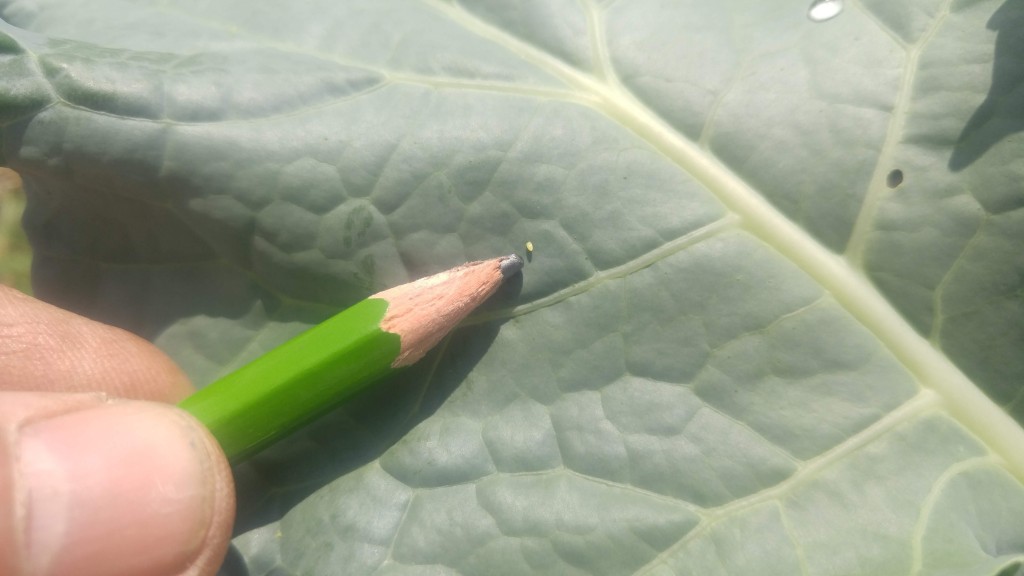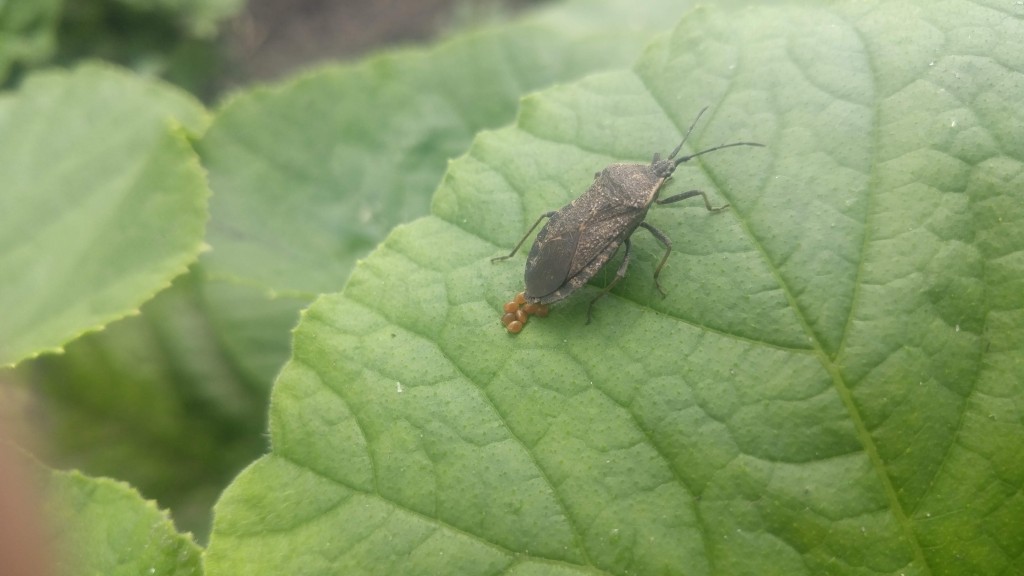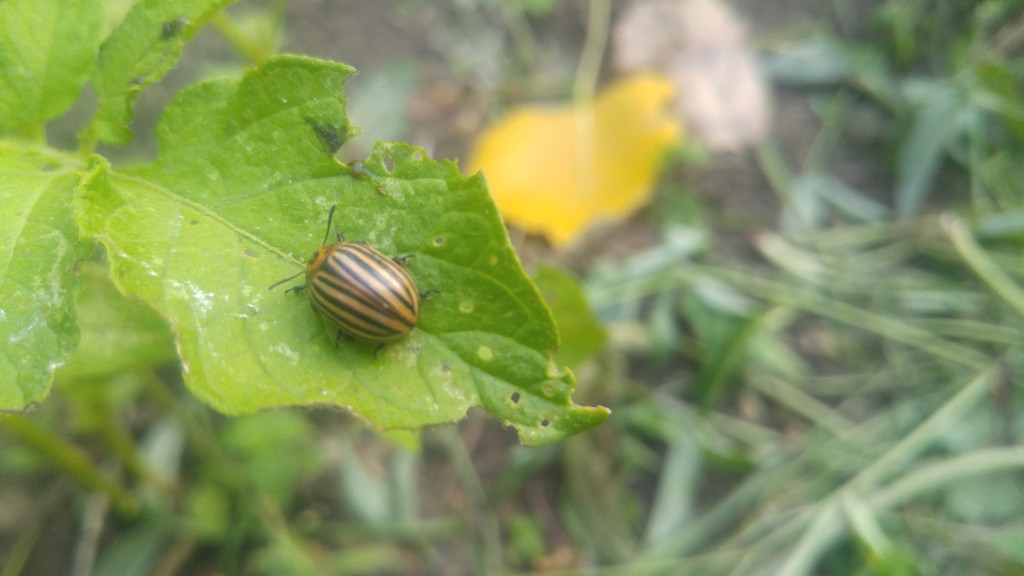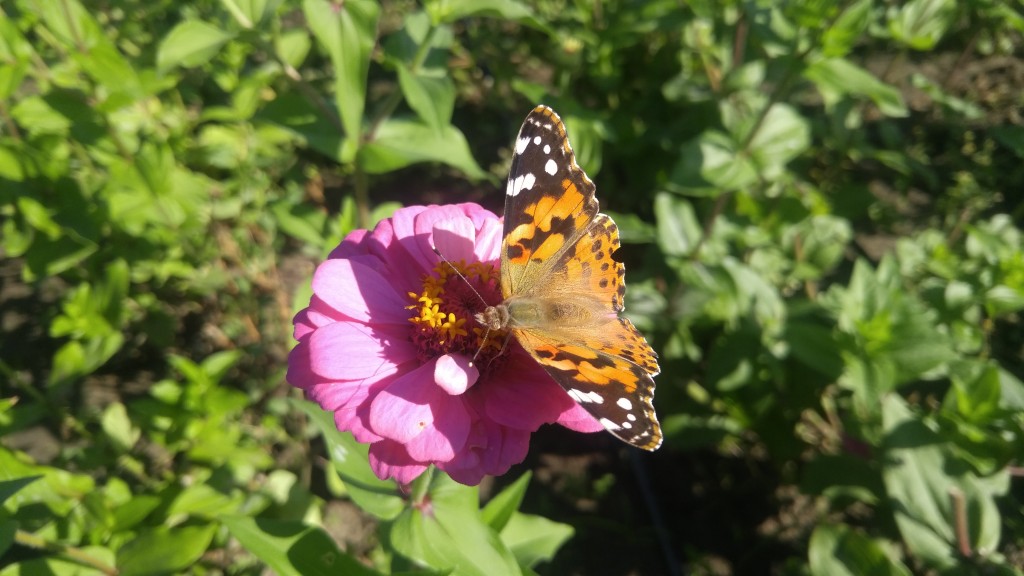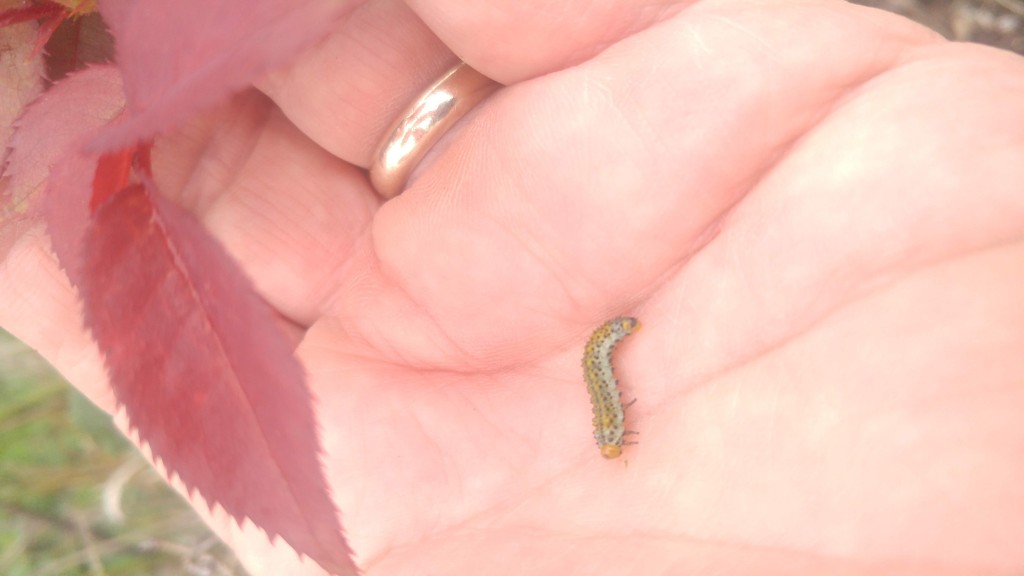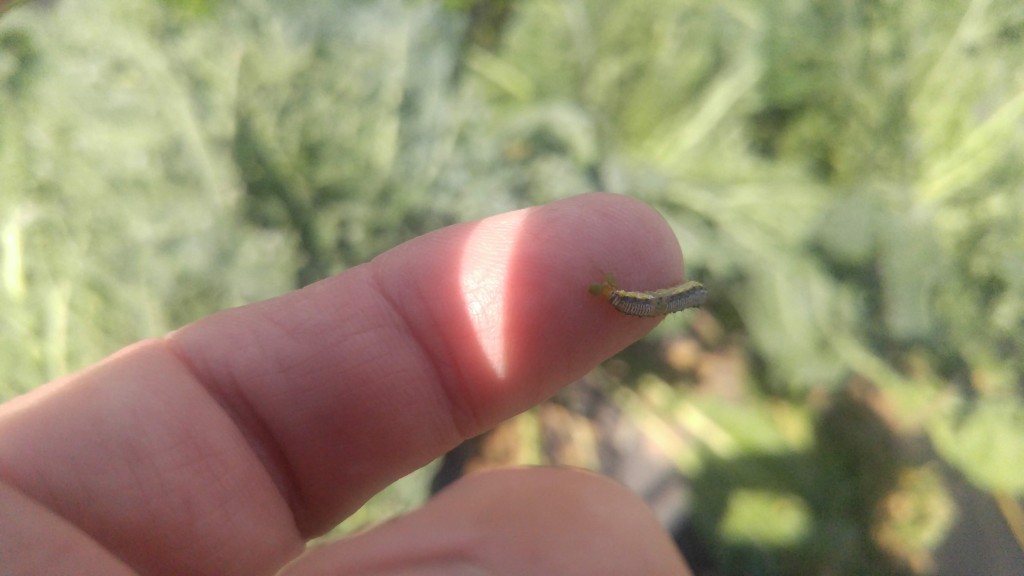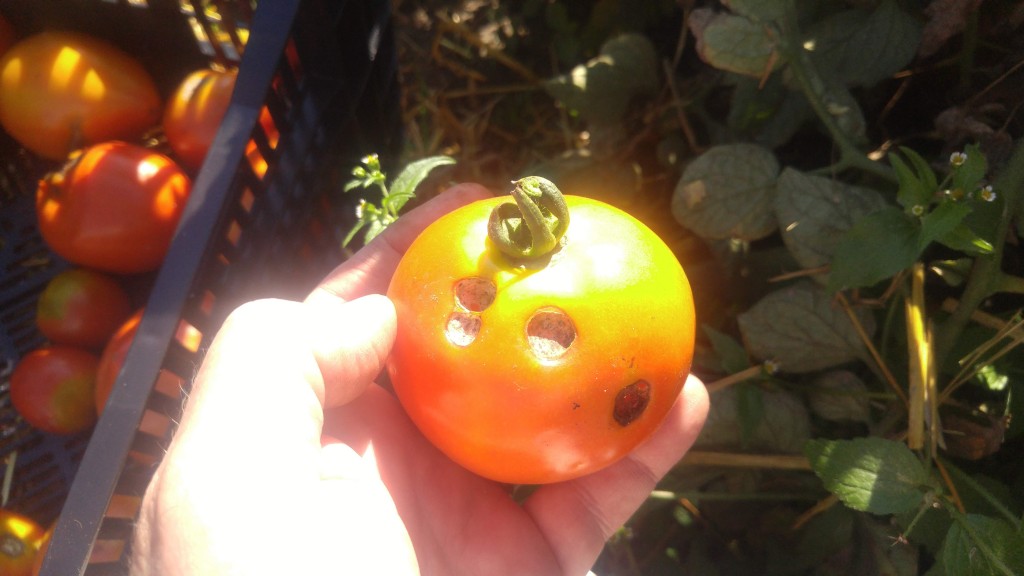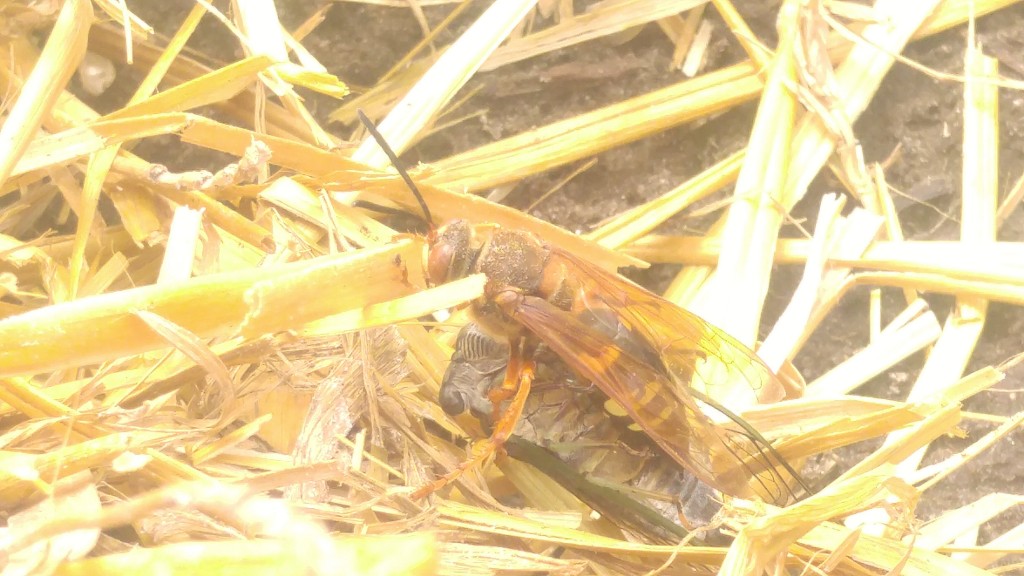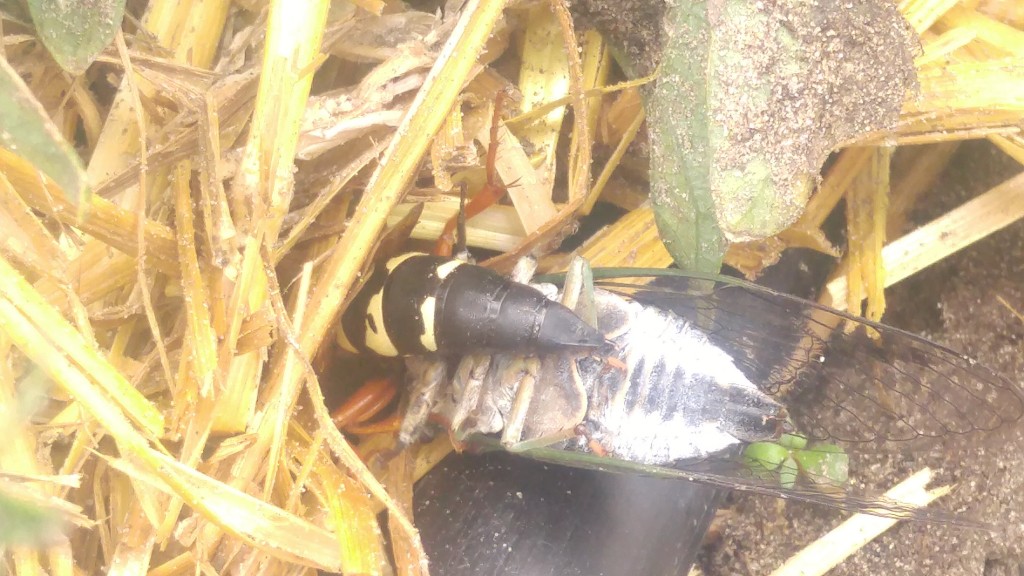Insect pests have begun to show up in my garden this week. It seems like it’s early for them, but that’s only because the garden plants are small for this time of the year due to our late start. It is the middle of July after all so I would expect some insect problems.
The first insect I spotted in the garden were cabbage butterflies. They are those white butterflies that flutter around the garden. They feed on plants in the cabbage family, including cabbage, broccoli, cauliflower, and other related plants. Watch them closely when they’re in your garden. Every time a female butterfly briefly touches down, she lays a single tiny egg. Over time she will lay a lot. Of course the butterfly itself is harmless, it’s her larval offspring that are so destructive. Many of the eggs and small larvae will be eaten by beneficial insects before they even have a chance to do any damage but there will always be plenty left over to munch on your plants.
I suggest you take steps now to nip this problem in the bud. A spray of the biological pesticide Bt right now, will easily kill these pests while they’re in their most vulnerable stage of growth.
The next problem insect I spotted was a female squash bug laying her eggs on a squash vine. She’ll lay her eggs on any pumpkin, squash or related plant. Usually you’ll find the eggs on the underside of a leaf but this one was laying her eggs on the upper surface.
One way to reduce their numbers is to squish the egg masses before they hatch. Later on, if the bug population is high and the vines begin to wilt, you may have to resort to an organic or conventional insecticide. They are very destructive to squash vines and can leave you with next to nothing to harvest if left unchecked.
The third insects making their appearance in my garden this week are tomato hornworms. These are the larval stage of the fascinating sphinx moth. Farmers rarely take notice of tomato hornworms because they don’t usually occur in high enough concentration to make it economical to apply insecticide for them. If the worm count goes above one for every two plants, then farmers will think about doing something about them.
In a typical tomato field there are thousands of plants but in a home garden there may be only a few, making tomato worms a real threat to a gardeners harvest.
Even if you look closely you probably will not find any hornworms on your plants because they are so well camouflaged. Plus, right now, since they are just getting started, they are very tiny. The ones I spotted were about a quarter of an inch long. At this early stage, they really don’t harm the plant much.
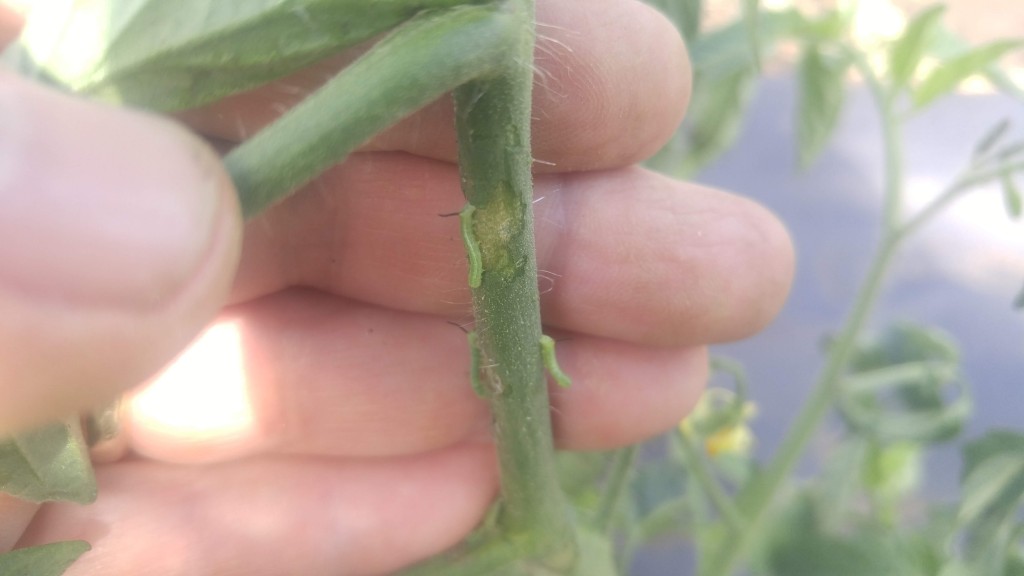
I found four of these little guys on my tomato plant. Even at this stage you can see their distinctive horn. Cute huh?
However, when they grow to their full size — about three inches long — they can decimate a tomato plant by eating all of the leaves and will feed on tomato fruit to boot.
I’m worried about my tomatoes being hammered by hornworms this season. Because I planted them late, they are only about half the size for mid-July. That means there are far fewer tomato leaves per plant for the hornworms to feed on making my small plants more vulnerable. So I’ll be watching them very closely the next few weeks.
The last pest I found were Colorado potato beetles on my potato plants. They must have arrived during the weekend because they were eating my potato plants and getting fat. I killed a couple dozen that were feeding on one plant.
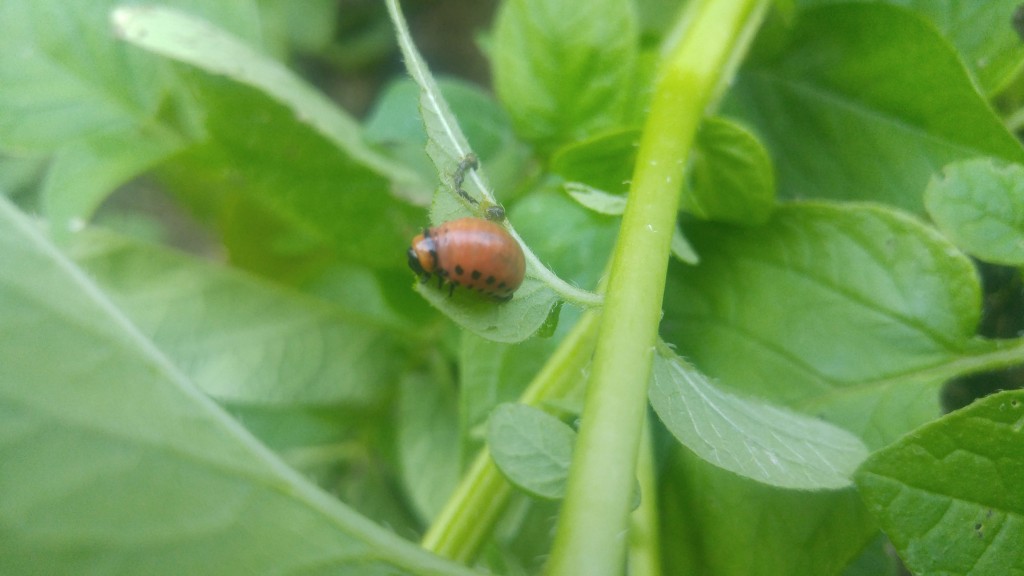
Colorado potato beetle larva. Both larvae and adults can be controlled by knocking them off the plant into a pail of soapy water.
Adult beetles and larvae are in my garden now. The female adults are busy laying eggs and the larvae are busy eating. Crush the orange eggs whenever you find them.
I suggest you scout your garden now and take steps to control these pests before they have a chance to cause real damage.
Bob
